52 Weeks of Fantastic Bindings, Week 48: 19th century Pictish gauffered edges …

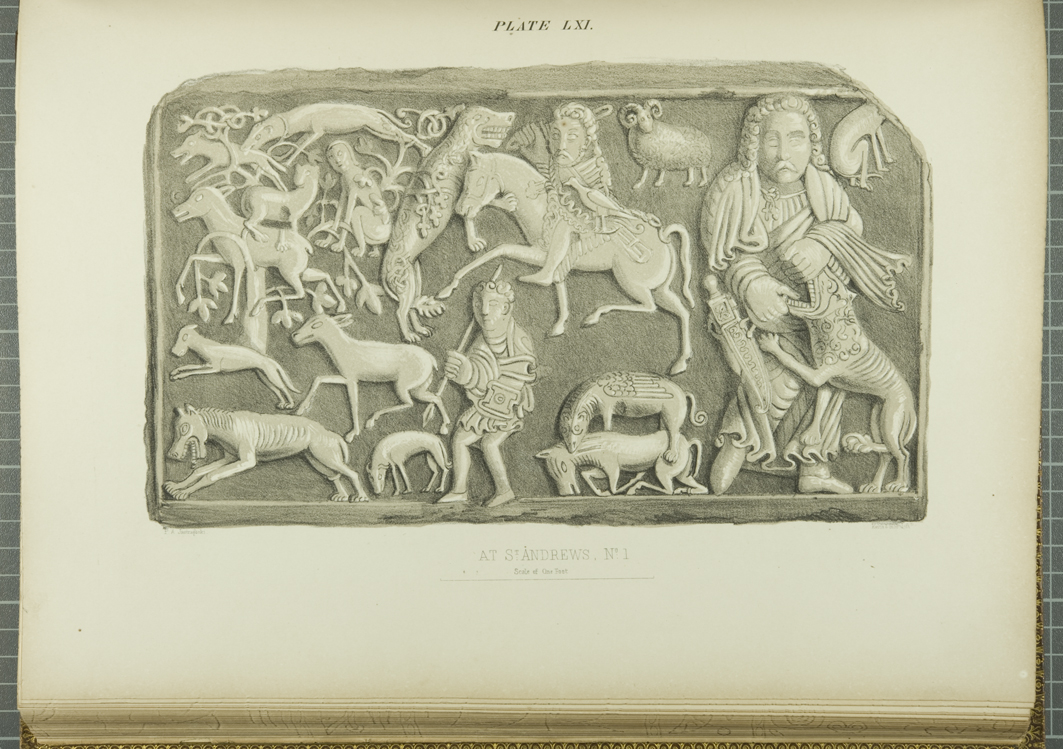
Now, I’ve seen a fair number of books with gauffered edges in my time, however this one takes the cake. This week’s binding post was discovered while I was fetching a different book for a reader, I just happened to spot its spine amongst a row of folio books. This book comes from the Hay Fleming Reference Library, deposited in the University Library in 2000 and is one of the works printed in the first series of books by the Spalding Club. This is the first volume (of a two volume set) edited by John Stuart entitled: Sculptured Stones of Scotland. Stuart was one of the most active members of the first incarnation of the Spalding Club, and he personally oversaw the editing of 14 of the clubs first 38 publications, including this two volume set. This work, regarded by antiquarians as a definitive reference resource for early Scottish stone sculpture, is a large two volume set chiefly illustrated by over 250 plates engraved by Keith & Gibb (Aberdeen) of extant early Scottish stone sculpture.
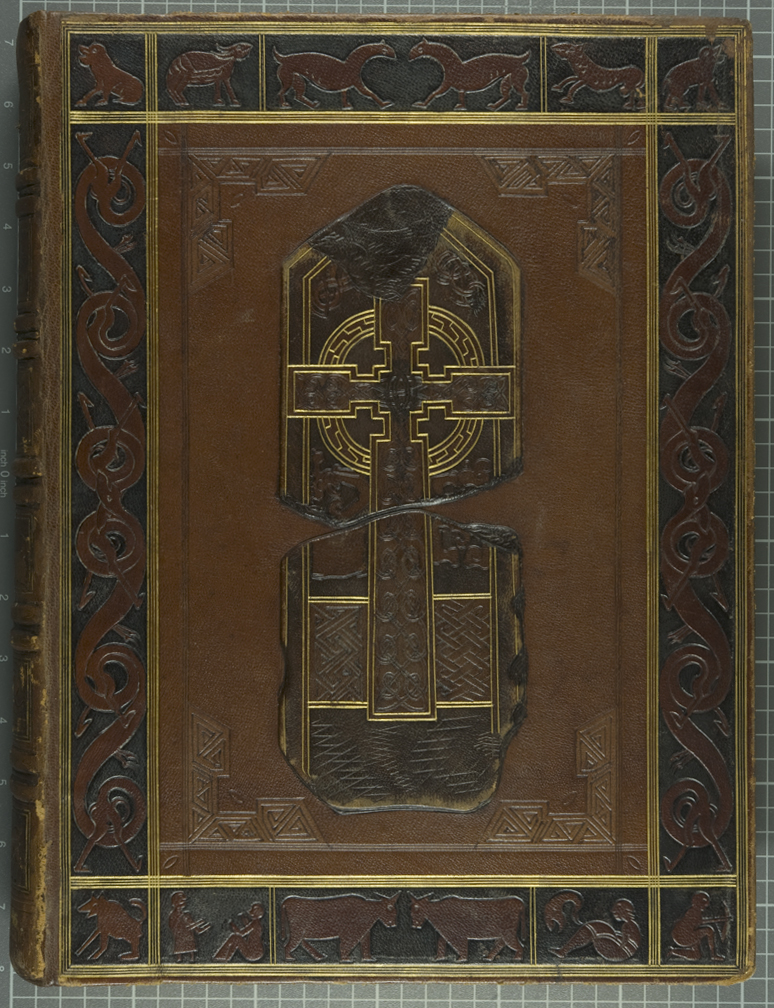
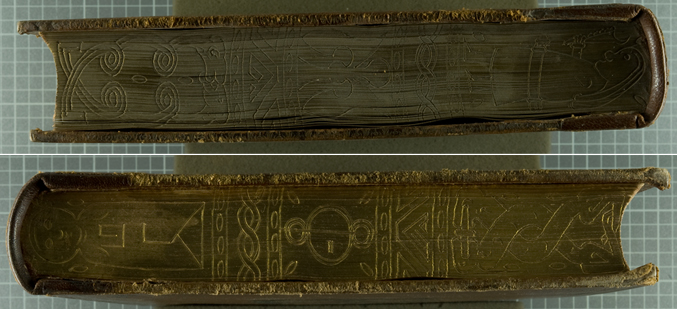
Volume one of this two volume set in the Hay Fleming Reference Library (the library has multiple copies of this publication) has been bound in a 19thcentury deluxe manner. This book has bound in contemporary brown goatskin on boards with gold quadruple fillets on both boards. The front board features a stained and blind stamped border incorporating Pictish designs and a central raised depiction of a Scottish high cross, tooled in gold and stained for depth. The back board has been decorated with Pictish corner ornaments and with a depiction of a Pictish standing stone in blind tool with staining. The spine has raised bands and the spine panels have been ruled in gold and blind stamped with Pictish designs. The board edges and turn-ins have been tooled in gold and marbled endpapers have been added.
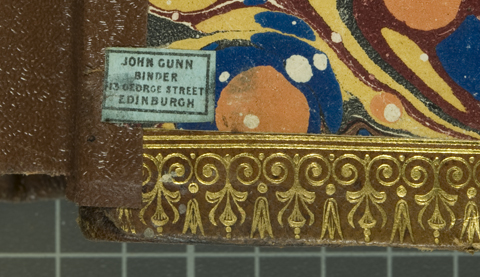
The most stunning feature of this binding, however, is that all edges have been gilt and gauffered using Pictish designs (see above and left). Normally, gauffered edges are made using a simple tool or pattern, however this design has been custom-made for this binding, as each edge features different symbols. All of this work has been done by John Gunn, an Edinburgh based binder working in New Town between 1845 and 1856 whose binder’s tag on can be found on the back paste-down (see right). This binding is a phenomenal example of 19th century fine binding, one which I first mistook for a modern rebind.
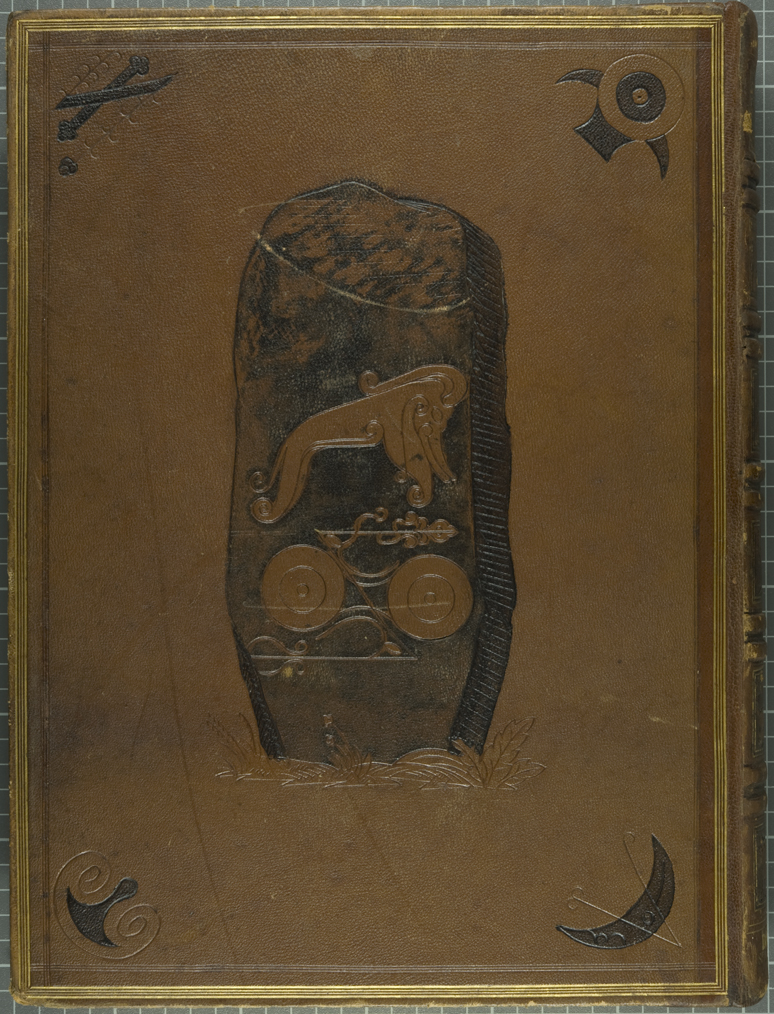
These volumes were collected by David Hay Fleming, however it is hard to tell if Fleming bought volume 1 already bound in this manner or not. Whatever the case, his notes are found throughout the volume, so we can be sure that the book did exist in this state in his reference library. This is a great reference book for early Scottish historians and it has been bound in such a manner that gives it the weight and attention that it deserves.
–DG